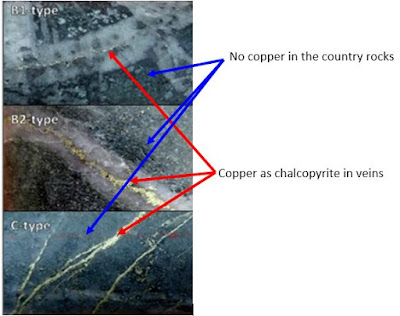Imagine you are a long suffering director of a junior exploration company. Those damn geologists want to spend money drilling a gold project whereas you just want to stake some Lithium prospects in Nevada/Chile/Argentina etc, and live the good life in Vancouver/Toronto/London etc.
Junior companies don't have massive piles of cash and drilling is expensive (this varies by country - but diamond drilling will be around $200-300/m), but you relent and allow them to drill a few holes (1500-3000m) costing around ~$0.5 to 1 million (or more).
You an see the costs add up quickly, so it is key not to waste money (remember every dollar put into the ground is a dollar less for your expenses) by drilling holes with low potential to get a good intercept that you can use to generate news and interest and provide an opportunity to raise money.
Some company's go to the 100% total BS end of the scale to maximize either the thickness or grade from a drill-hole, and the prize for this goes to Avrupa Minerals for their Slivovo project in Kosovo.
 |
| I have to admit, I didn't think drilling companies allowed you to drill holes at such a shallow angle. |
Even the well known exploration companies can get on the bandwagon - here is some drilling from their Kipushi project in the DR of Congo, but as this is at 1000m depth, there are few areas where holes can be drilled from.
 |
| Hole 3 - bit of a promo hole, but still a great deposit. |
In other cases it is accidental, the company doesn't know what the controls are on mineralisation and a few of the early holes have been drilled down the middle of a vein/high grade zone of high grade, or it has been assumed that the mineralisation is 'disseminated' and can be explored with vertical holes - this is a very common, but bad practice.
What should you look out for?
- The company is drilling vertical (-90 degrees) or nearly vertical (>-85 degrees) holes
- This is OK if the mineralisation is horizontal (e.g. sediment hosted copper, mantos etc..) - again you can check this by looking at any sections the company has included in the press release or on their website.
- If you are drilling very deep deposits, a vertical holes is the quickest (and therefore cheapest) way to get there.
- Large changes in grade between drill-holes that are very close to one another
- In gold deposits this is harder to see due to the nugget effect.
 |
| This can cause major issues for mining |
Let us zoom in a bit where we have 1 hole that hasn't been drilled vertically.
 |
| So we go from gold to no gold over 45m.... |
What is happening? Basically you have a strong vertical control on mineralisation, i.e. the gold is found in narrow, near vertical zones and when a hole hits the middle of that zone you gets lots of gold, and when it misses, you get no gold.
I've put on some hypothetical drill-holes (black lines) that target the good gold zones, and we know that no exploration company would ever try and abuse the situation to maximize their results....
A more extreme example
 |
| All that glitters is gold |
We also see this to some degree at Cascabel. It is a porphyry deposit the copper and gold are not evenly distributed but is found in veinlets and fractures.
 |
| This is typical porphyry mineralisation |
What does this mean when we look at the drill results?
I've included a couple of sections to illustrate:
 |
Drill-hole 15-012 - is a near vertical hole (drilled at -87 - so 3 degrees off vertical), it intersected:
- 58m @ 0.15 g/t Au and 0.47% Cu from 186m
- 38m @ 0.171% Cu
- 52m @ 0.127 g/t Au and 0.41% Cu.
lets look a bit closer
 |
| These holes are 2.5m apart where they cross, yet the grade is very different. |
This hole came within 2.5m (a car length) of hole 012 (they cross over in the low grade zone). They essentially drilled the same piece of rock, but one holes (the vertical one) hit lots (relatively speaking) of gold and copper and the inclined hole hit nothing.
How can 1 hole (012) hits lots of copper and gold and another hole (13-004), exploring virtually the same area hit nothing? If the mineralisation was disseminated we would expect to see both holes returning grades that are very similar.
This means there is a strong vertical control on the veins (therefore the grade) at Cascabel, which is normal for a porphyry deposit. Here is the section where I have (crudely) drawn some >1% Cu zones.
Download the Leapfrog viewer file here (link) - it is the same as the one in the previous post on Cascabel, and spin around the data ans use the ruler tool to measure the distance between drill-holes.


I guess I have selected a mind blowing and interesting blog. milwaukee cordless drills
ReplyDeleteAppreciate this information
ReplyDeleteLot of valuable information. Thank you.
ReplyDeleteGreat information here! I enjoyed reading your blog.
ReplyDelete